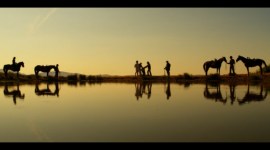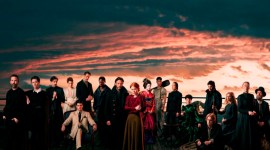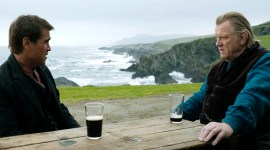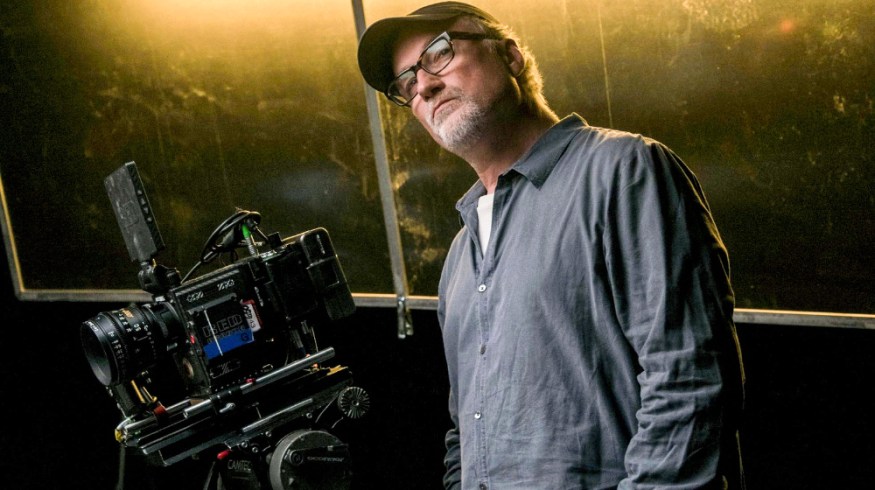
How Technology Made David Fincher a Better Director
Has there ever been a movie director who has taken more advantage of new technology than David Fincher? We look back on how digital production benefitted his movies so much.
When digital cinematography was in its infancy, around 2005, it was like the Wild West; new cameras were appearing seemingly every week, whether from University’ concept’ programs or start-ups with a movie making a revolution on their minds.
In this white heat of technology, director David Fincher started to craft his movie-making skills. He was a risk taker with new technology but driven by the promise it gave him. As much as Fincher and his crew were proud of the films they made, they were also proud of how they made them.
Zodiac’s Digital Gamble
Fincher had already used digital cinematography for his commercials and decided to commit early to this technology for his movies. But his long-time producer Ceán Chaffin brought some hard business sense to brace against his pioneering creative decisions.
Ceán had been involved more in costing this digital workflow out and had looked at introducing digital for a feature before Zodiac but found that it wasn’t cost-efficient at that time; Zodiac was different. “At the moment of Zodiac, storage was so cheap that we could push it; it was also about the savings at that point. The sticking point was really about storage for us up to Zodiac.”
At the time, she was fighting against Fincher’s determination to bend the movie-making rules to his will. It was her job to balance the books. Of shooting Benjamin Button, she commented, “There is a fear factor about change, budget-wise but if I said to Fincher that it was going to cost $100,000 more to shoot digitally, my guess is that he would still say, ‘We’re doing this.’ Just because of the ease of workflow.”
But not only was it more accessible, but it was also cheaper too. You saved in film stock, and you applied it to different areas – basically equipment. But all this efficiency took its toll on crew numbers, too, which was seen as another Fincher economy that Ceán welcomed with reservations. “This is something I don’t know if I want to say, but we have a reduced crew, just the way David works, he prefers a reduced crew. In our editorial crew, the way he works is a little bit longer. We added some people in editorial, but overall the crew was much less than any other film going through Warner Bros at the time.”
Savings on Insurance
Like other data or tapeless shoots found at the time, insurance companies liked how Fincher’s films worked. For instance, the workflow on Benjamin Button saw a reduction in insurance costs. Ceán Chaffin again at the time of the film’s release; “We had insurance come in, the people who insure the movie. We walked them through everything, and they reduced our insurance costs about halfway through the movie. Was it a lot? No. Did he count? Yes, we put every dime on that screen. That was pretty exciting for bean counters like myself!”
For insurance companies, it must have been a no-brainer. You get cloning of your movie almost immediately, no film to send on a plane to the labs, and much less risk of anything going wrong. “We had a copy of the movie at two different studios, and I’m talking about just the original footage,” she commented.
The workflow also allowed Fincher to practice his famous habit of multiple takes, and multiple deletions of takes. Recording onto hard drives allowed for Fincher’s method of variations and there were good reasons for them.
For example, the actors didn’t have a clapper on their faces. Ceán expands on this theme, “It ‘jars’ where they’re going. He likes to be on a roll on the set, so the ‘not reloading’ in front of an actor is great. He also likes having the high-def monitor to show whoever what is going on. He hates surprises with next-day dailies. David Fincher is technologically fearless.”
The Cameras That Enabled Him
Grass Valley’s Viper system shot Zodiac and Benjamin Button before it was canceled as a product, but it was ahead of its time for sure. It was shot in an HD Filmstream DPX mode at 2.37:1 anamorphic directly to hard drives and backed up to LTO, another plus point for the insurance companies. Benjamin Button cinematographer Claudio Miranda commented at the time how revolutionary the camera was, “When we tested with the Viper, we were getting results we hadn’t seen before in an HD video camera, we also used film for some sequences and it was funny that some of those film shots were the ones people thought were HD.”
Claudio was also using the Viper’s footage to attempt some on-set color correction which was very new in those days and encouraged by Fincher. He made a website that represented the movie’s look, which Fincher and he could check at the end of each shoot day. Such was the inconsistency of screens and software at the time, he also made a printed book which he took to the VFX company Digital Domain. “With computers changing and screens changing, maybe print would be the most consistent thing you could have!” He commented when the movie came out.
But it wouldn’t be long before RED knocked on Fincher’s door with their latest camera. He had concluded how he wanted his movie process to go. He was tired of trying out different filters on cameras and wanted to push the coloring of his films toward post, we’ve all seen the different hues he used for his movies to accentuate moods almost subconsciously. Nevertheless, he was looking for a camera partner to grow with him and his demands.
The camera was made for Mindhunter, the sorely missed Netflix series. He found it in RED, who even made him his camera and named it after the alien in the franchise. It was based on RED Weapon Dragon 6K sensor technology. Fincher needed a camera that didn’t have tethers; he needed something that could move anywhere quickly. The highly customized Xenomorph had all that.
The Mindhunter Disciplines
Fincher directed and produced streaming shows like Mindhunter and House of Cards were templated to a certain degree mainly because there were full of words. Both shows were very ‘talky’, and so had some guidelines for the shooting team to adhere to.
No zooms, handheld or Steadicam, and keep to prime lenses if possible. Cinematographer Erik Messerschmidt remembers the regime in place, “Most of the drama in Mindhunter comes from the characters’ experiences in very long and complex interview scenes. The content of those scenes is extremely measured and nuanced, and I think a moving or shaking camera would have been a very distracting way to tell such a complex story.”
The lack of zooms was a hard rule to keep to, Erik again. “Prime lenses force you to always keep the camera in the right place from the start, and restricting our lens choices keeps the storytelling very consistent, which I think is important on a show like this.”
Although the show had a roster of directors, Fincher was in the driving seat as far as the look went and kept to his usual tight selection of colors. The period was full of yellow, cyan, brown, and avocado green. Those colors became the show’s benchmark. When it came to the final color grading, they didn’t apply much of a cast or skew the color, as much of the look results from thoughtful set design and costume choices.
As far as the RED Xenomorph was concerned, it ticked all the boxes Fincher had in mind from its inception.”With the exception of NDs, I didn’t use any filtration, so in most cases, we didn’t even need a matte box. This method led to a camera that simply required a lens and battery to shoot without losing any functionality the assistants or sound department need.”
Bad Travelling
Just when you thought Fincher’s creative skills were restricted to traditional narrative filmmaking, the eerie animation of Bad Travelling from Netflix’s Love, Death & Robots series arrives. But how could the time-heavy animation process be helped by Fincher’s love of retakes and tight palette control?
Blur animation studio had worked with Fincher before on Mindhunter and Girl with the Dragon Tattoo. Co-CG Supervisor Jean Baptiste Cambier saw some scope to help him flourish with what was a new medium for him. Blur created an initial look for Bad Travelling before look discussions started with Fincher.
The team started with a still frame of the whole crew standing on the boat’s deck. “From this starting point, we threw in a lot of versions of the same frame under different lighting scenarios and colors. We then got to meet David and showed him that contact sheet. He loved it, which triggered a long discussion about what the show should be.”
But further to the look, Fincher wanted to use the lighting more. He likes it to tell the story as much as any other tool at their disposal. He didn’t shy away from brave choices with lighting. In a tempest scene, for instance, he asked the Blur team to push the intensity of the lightning flashes — ‘to break some OLED screens with how bright it was’ was the way the director put it.
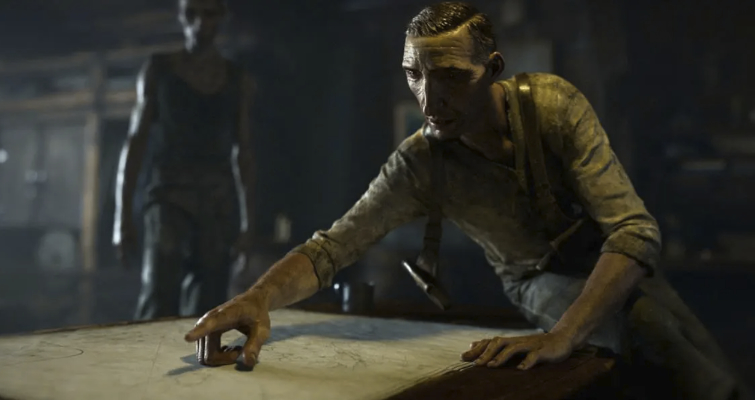
“It was liberating to be bold with lighting in this way. I would encourage others to be more ugly and real than pretty and fake,” concluded Cambier.
Fincher brought his visual flair to a new medium and was disrupting again. He even encouraged the animation team to do without a main key light. “That would remove a lot of light, making the shots darker with faces falling into shadow,” commented Cambier, “It really brought another dimension to the action. David was all for it, and we constructed the sequence together based on this darker lighting scenario.”
But the truth is that Fincher doesn’t get hung up on technology; he just uses it wisely. As Erik Messerschmidt concludes, “David Fincher is absolutely a filmmaker who uses technology to his advantage. That said, it’s not about toys; it’s all story and project-based. There were times when we did dozens of takes and others when we moved on in one or two. It all depends on the situation.”
(Feature image – Credit: Merrick Morton/Netflix)
For more on filmmakers, check out these articles:



